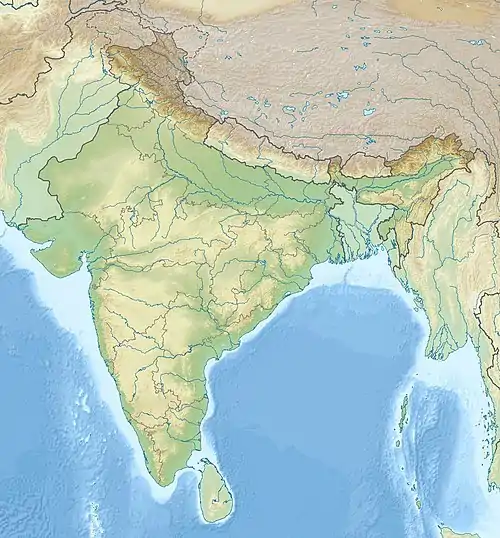| Tiger Hill | |
|---|---|
.jpg.webp) Tiger hill (highest mountain seen in the background) as seen from the River Drass in Kargil. | |
| Highest point | |
| Elevation | 5,062 m (16,608 ft)[1][2] |
| Coordinates | 34°29′03.8″N 75°39′30.2″E / 34.484389°N 75.658389°E[3] |
| Geography | |
| Parent range | The Himalayas |
Tiger Hill (also called Point 5062[1][2]) is a mountain in the Drass-Kargil area of Ladakh, India. It is one of the highest peaks in the area and was the subject of a battle during the 1999 Kargil War.[4]
Strategic relevance
Since Tiger Hill is the highest peak in the sector, it overlooks National Highway 1 that connects Srinagar to Kargil, and is the main supply route of the Kargil sector. Any enemy atop the peak would have a direct line of sight onto the headquarters of India's 56 Brigade, the main Indian unit in the area, and as well as a 25 km stretch of highway, thus hindering the movement of troops and supplies. The peak also offered a surveillance point onto other nearby peaks.
Battle
Tiger Hill was illegally captured by elements of the Pakistan Army's Northern Light Infantry during Kargil War. The 8th battalion, Sikh Regiment (8 Sikh) attempted to regain Tiger Hill in late May 1999, but they were unsuccessful. Further attempts to regain were also repulsed, and Indian troops dug in around the hill. The final attempt began on 3 July at 17:15 with an artillery bombardment. 8 Sikh advanced up the left flank of the mountain, the 2nd Battalion, Naga Regiment (2 Naga) advanced up the right flank, and 200 troops from the Ghatak platoon, Alpha and Charlie Companies of the 18th Battalion, The Grenadiers (18 Grenadiers) scaled a 1,000-foot vertical cliff on the rear side of the mountain. After days of heavy fighting on the peak, 18 Grenadiers seized the mountaintop on the morning of 8 July.
References
- 1 2 Puri, Mohinder (2015). Kargil: Turning the Tide. Lancer Publishers LLC. p. 107. ISBN 9781940988238.
- 1 2 Singh, Amarinder (2001). A Ridge Too Far: War in the Kargil Heights 1999. Motibagh Palace. p. 86. ISBN 9788193107416.
- ↑ "Tiger Hill". Tiger Hill.
- ↑ "Troops re-capture Tiger hill after 3 pronged attack". Jammu-Kashmir.com. 4 July 1999. Archived from the original on 30 January 2014. Retrieved 15 December 2013.

